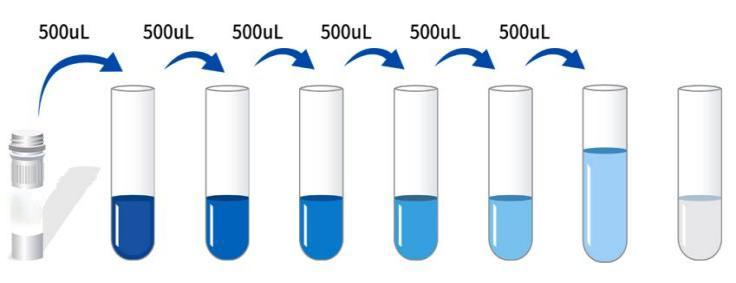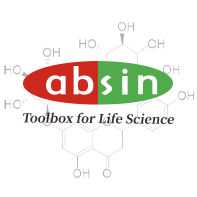Product Details
Product Details
Product Specification
| Usage |
Experimental equipment required for the experiment: 1. Microplate reader (450nm) 2. High-precision pipette and gun tips: 0.5-10uL, 5-50uL, 20-200uL, 200-1000uL 3. 37℃ constant temperature box 4. Distilled water or deionized water Sample processing and requirements: Serum: Place the whole blood sample collected in the serum separation tube at room temperature for 2 hours or at 4℃ overnight, then centrifuge at 1000×g for 20 minutes, and take the supernatant, or store the supernatant at -20℃ or -80℃, but avoid repeated freezing and thawing. Plasma: Collect specimens using EDTA or heparin as anticoagulants and centrifuge them at 1000×g for 15 minutes at 2-8℃ within 30 minutes of collection. The supernatant can be tested or stored at -20℃ or -80℃, but repeated freezing and thawing should be avoided.Other biological fluids: Centrifuge at 1000xg for 20 minutes, remove the supernatant, and assay. Pre-Assay Preparation: 1. Remove the test kit from the refrigerator 10 minutes in advance and equilibrate to room temperature. 2. Prepare the standard gradient working solution: Add 1 mL of universal diluent to the lyophilized standard, let stand for 15 minutes to completely dissolve, then gently mix (concentration 1000 pg/mL). Then dilute to the following concentrations: 1000 pg/mL, 500 pg/mL, 250 pg/mL, 125 pg/mL, 62.5 pg/mL, 31.25 pg/mL, 15.625 pg/mL, and 0 pg/mL. Serial dilution method: Take seven EP tubes and add 500uL of universal diluent to each. Pipette 500uL of the 1000pg/mL standard working solution into the first EP tube and mix thoroughly to make a 500pg/mL standard working solution. Repeat this procedure for subsequent tubes. The last tube serves as a blank well; there is no need to pipette liquid from the penultimate tube. See the figure below for details.  3. Preparation of Biotin-Antibody Working Solution: Centrifuge the concentrated Biotin-Antibody at 1000×g for 1 minute 15 minutes before use. Dilute the 100× concentrated Biotin-Antibody to a 1× working concentration with universal diluent (e.g., 10uL concentrate + 990uL universal diluent) and use on the same day. 4. Preparation of Enzyme Conjugate Working Solution: 15 minutes before use, centrifuge the 100x concentrated enzyme conjugate at 1000×g for 1 minute. Dilute the 100x concentrated HRP enzyme conjugate to a 1x working concentration with universal diluent (e.g., 10µL concentrate + 990µL universal diluent). Use the same day. 5. Preparation of 1x Wash Solution: Dispense 10mL of 20x Wash Solution into 190mL of distilled water (Concentrated Wash Solution removed from the refrigerator may crystallize; this is normal. Allow to stand at room temperature until the crystals have completely dissolved before preparing). Procedure: 1. Remove the desired strips from the aluminum foil bag after equilibration at room temperature for 10 minutes. Seal the remaining strips in a ziplock bag and return them to 4°C. 2. Sample Addition: Add 50 μL of sample or standard of varying concentrations to the corresponding wells. Add 50 μL of universal diluent to the blank wells, followed by 50 μL of Biotin-Antibody Working Solution to each well. Cover with film and incubate at 37°C for 1 hour. (Recommendation: Dilute the sample to be tested at least 1-fold with universal diluent before adding it to the ELISA plate to minimize matrix effects. The sample concentration should be multiplied by the dilution factor when calculating the final concentration. It is recommended to run replicates for all samples and standards.) 3. Plate Wash: Discard the liquid and add 300 μL of 1x Wash Solution to each well. Let stand for 1 minute, then shake off the wash solution and pat dry on absorbent paper. Repeat this process three times (a plate washer can also be used). 4. Enzyme Conjugate Working Solution: Add 100 μL of enzyme conjugate working solution to each well. Cover with film and incubate at 37°C for 30 minutes. 5. Wash: Discard the liquid and wash the plate five times as in step 3. 6. Add substrate: Add 90 μL of substrate (TMB) to each well, cover with a sealing film, and incubate at 37°C in the dark for 15 minutes. 7. Add stop solution: Remove the ELISA plate and add 50 μL of stop solution directly to each well. Immediately measure the OD value of each well at a wavelength of 450 nm. Calculation of experimental results: Result evaluation: 1. Calculate the average OD value of the standard and sample replicates and subtract the OD value of the blank well as a correction value. Plot a standard curve for the four-parameter logistic function on double-logarithmic graph paper with concentration as the horizontal axis and OD value as the vertical axis. 2. If the sample OD value is higher than the upper limit of the standard curve, dilute the sample appropriately and retest. Multiply the sample concentration by the corresponding dilution factor. 
|
||||||||||||||||||||||||||||||||
| Theory | This kit utilizes a competitive enzyme-linked immunosorbent assay (ELISA). Sample, standard, biotin-labeled antibody, and HRP conjugate are sequentially added to microwells pre-coated with the universal species thromboxane A2 (TXA2) antigen. After incubation and washing, the assay is developed using the substrate TMB. TMB is converted to blue by HRP peroxidase and then to yellow by acid. The intensity of the color is positively correlated with the universal species thromboxane A2 (TXA2) content in the sample. The absorbance (OD) is measured at 450 nm using a microplate reader to calculate the sample concentration. | ||||||||||||||||||||||||||||||||
| Source | All | ||||||||||||||||||||||||||||||||
| Synonym | Thromboxane A2 ELISA Kit | ||||||||||||||||||||||||||||||||
| Detection Type | Competition Law | ||||||||||||||||||||||||||||||||
| Composition |
|
||||||||||||||||||||||||||||||||
| Background | Thromboxane A2 (TXA2) is a thromboxane produced by activated platelets during hemostasis and possesses prothrombotic properties: it stimulates the activation of new platelets and increases platelet aggregation. This is achieved by activating thromboxane receptors, which leads to platelet shape changes, inside-out activation of integrins, and degranulation. Circular fibrinogen binds to these receptors on adjacent platelets, further strengthening clot formation. It is also a known vasoconstrictor, particularly important during tissue injury and inflammation. It is also believed to be the cause of Prinzmetal's angina. The receptor that mediates the effects of TXA2 is the thromboxane A2 receptor. TXA2 is produced from prostaglandin H2 in a metabolic reaction via thromboxane-A synthase. It is highly unstable in aqueous solution, hydrating to biologically inactive thromboxane B2 within approximately 30 seconds. Due to its very short half-life, it primarily acts as an autocrine or paracrine mediator in nearby tissues surrounding its production site. | ||||||||||||||||||||||||||||||||
| General Notes | 1. Strictly adhere to the specified incubation time and temperature to ensure accurate results. All reagents must be at room temperature (20-25°C) before use. Refrigerate reagents immediately after use. 2. Improper plate washing may result in inaccurate results. Ensure that all liquid in the wells is aspirated thoroughly before adding substrate. Do not allow the wells to dry out during incubation. 3. Remove any residual liquid and fingerprints from the bottom of the plate, as this will affect the OD value. 4. The substrate developer solution should be colorless or very light in color. Do not use substrate solution that has turned blue. 5. Avoid cross-contamination of reagents and specimens to prevent erroneous results. 6. Avoid direct exposure to strong light during storage and incubation. 7. Do not expose any reagents to bleaching solvents or the strong fumes emitted by bleaching solvents. Any bleaching agent will destroy the biological activity of the reagents in the kit. 8. Do not use expired products, and do not mix components with different product numbers and batches. 9. Recombinant proteins from sources other than the kit may not be compatible with the antibodies in this kit and will not be recognized. 10. If there is a possibility of disease transmission, all samples should be managed properly and samples and testing devices should be handled according to prescribed procedures. |
||||||||||||||||||||||||||||||||
| Storage Temp. | If the unopened kit is stored at 4°C, the shelf life is 6 months. | ||||||||||||||||||||||||||||||||
| Test Range | 15.6-1000 pg/mL | ||||||||||||||||||||||||||||||||
| Applications | Serum, plasma, and other biological fluids |


